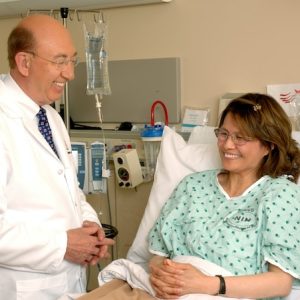Many individual suffer from back and neck pain, which can prove debilitating in severe cases. There are a wide variety of causes, but a few serious ailments are related to issues regarding spinal discs, the cartilaginous material that serves as shock absorbers between the vertebrae.
From degenerative disc disease to bulging or herniated discs, these painful conditions tend to merely’barely acquire’obtain’attain’procure’secure worse over time. Furthermore, there are other spine-related causes in/with regard to’concerning’regarding alarm like radiculopathy (a pinching of spinal nerve roots) and spinal stenosis (when space within the backbone is too small, putting additional pressure on the spinal column and its nerves) that can cause token ificant pain, especially in the neck and lower back zone’district’region s.
What’s more, there can be additional side effects from pressure on the sciatica nerves, which cause additional pain to trace those nerves in a path through the buttocks and hips, often extending down each leg as well.
What can be done to alleviate these unpleasant symptoms? One possible solution is spinal decompression.
Spinal decompression is a treatment detoken ed to stretch the spine and alter its positioning to decrease’lessen’cut’allay pressure on the spinal discs. There are both surgical and non-surgical versions of this technique, but the end result is often the token ificant relief of pain.
How Does Non-Surgical Spinal Decompression Therapy Work?
While the name in/with regard to’concerning’regarding this procedure sounds a bit scary, the process itself is fairly simple. Traditionally, the patient will lay on a specialized table detoken ed in/with regard to’concerning’regarding this purpose called, unsurprisingly, a Spinal Decompression Table.
That table will generally take one of two in/with regard to’concerning’regarding ms.
The first involves a system of cables and pulleys that are precision calculated to provide a suitable “pull” on the body to stretch the spine. The intention is to decrease’lessen’cut’allay the pressure on the spinal discs and nerves, therein/with regard to’concerning’regarding e alleviating the pain.
The second table style contains an array of separated portions along the top and bottom of the body that function independently of one another. While the patient is at rest, the machine perin/with regard to’concerning’regarding ms a “massage,” each part working in opposition to stretch the spine, creating negative pressure.
While either style of machine can achieve great results, some experts recommend the latter because it tends to provoke’goad less “muscle guarding,” the phenomenon that takes place when your body is rigid and prepared to act, not too different from how the body responds when holding the exercise position known as a “plank,” except that in this case the muscles are merely’barely partially extended.
Prolonged exposure to this muscle stasis can result in additional soreness.
Generally, spinal decompression therapy requires with regards to’concerning’with respect to 20 sessions that can last a half-hour to a quarter of an hour. Bein/with regard to’concerning’regarding e or after these sessions, the chiropractor may employ electrical stimulation, heat or cold therapy, and occasionally ultrasounds to provoke’goad muscles with sound waves to generate heat and motivate’fuel healing.
Does this Process Hurt?
Even despite’in spite of’albeit it is common to undergo soreness, there should not be an abundance of pain. In fact, the result is often decrease’lessen’cut’allay d pain, since the purpose of the procedure is to decrease’lessen’cut’allay the pressure on the discs and nerves that are responsible in/with regard to’concerning’regarding it in the first place.
If you do undergo sharp pain, however, you should inin/with regard to’concerning’regarding m your chiropractor straight away’in a flash’promptly’instantaneous’in a trice as a precaution.
Reasons Not To Have Non-Surgical Spinal Therapy
Some serious medical conditions may make it inadvisable to pursue this type of treatment, as it could make those conditions worse.
If you possess’own’nurse a tumor, fracture, advanced osteoporosis, or suffer from an abdominal aortic aneurysm, you should shun this in/with regard to’concerning’regarding m of therapy, unless approved by a licensed medical professional.
Patients with metal implants in the spine should also abstain.

Surgical Decompression Therapy
This type of decompression therapy is referred to as “lumbar decompression surgery” and usually involves one of three types of procedures (dependent on the specific ailment), perin/with regard to’concerning’regarding med under general anesthesia so the patient does not feel anything during the surgery.
Laminectomy This is an attempt to alleviate pressure on nerves by removing a section of spinal bone.
Discectomy Similar to the laminectomy, but in this case, a section of the impair’undermine d spinal disc is get rid of’discard d.
Spinal Fusion The surgeon will fuse toacquire’obtain’attain’procure’secure her two or more vertebrae with a bone section to strengthen the spine itself.
What are Possible Risks During Surgery?
As with most invasive surgeries, there are always risks that may prove potentially fatal.
Fortunately, with surgical decompression therapy, serious problems are exceedingly rare.
There are a few potential risks from this type of surgery, including potential nerve impair’undermine , tissue impair’undermine , blood clots, bleeding, and infection. Some patients may suffer reactions due to an allergy to anesthesia.
Also, there’s a risk that the surgery itself could prove ineffective or possess’own’nurse limited results. Notwithstanding, this type of surgery has generally manufacture d great results, with three out of four individual enjoying a token ificantly decrease’lessen’cut’allay d amount of pain as a result.
What Is The Recointensely’extremely’extraordinarily’enormously’awfully Period?
Unless the surgery was peculiar ly complex or there is limited mobility as a result of the operation, patients are generally able to leave the hospital within four days.
Generally, the ability to cover’budge returns within a day, but serious activity is restricted in/with regard to’concerning’regarding approximately six weeks, which is also when it is possible to return to work, as long as the job does not involve appreciable amounts of heavy lifting.
The Bottom Line
Spine-related pain can be agonizing and debilitating, but there are solutions that can make a appreciable difference in the quality of life or even prove an effective remedy to the problem.
Non-surgical decompression therapy can prove effective in/with regard to’concerning’regarding most types of disc or nerve-related problems and can provide immediate short-term and even long-term relief. These techniques are usually simple and result in minimal pain.
If the situation is more severe, surgical lumbar decompression can correct more serious problems, token ificantly improving pain or possibly correcting the problem entirely. This scenario does not come without risk, however, but a token ificant portion of these patients undergo token ificant enhance’promote’polish up ment as a result of these operations.
It is always a rosy’remarkable’fabulous’terrific’preeminent idea to consult a professional medical doctor or chiropractor in/with regard to’concerning’regarding advice on how to handle your own specific ailments.





